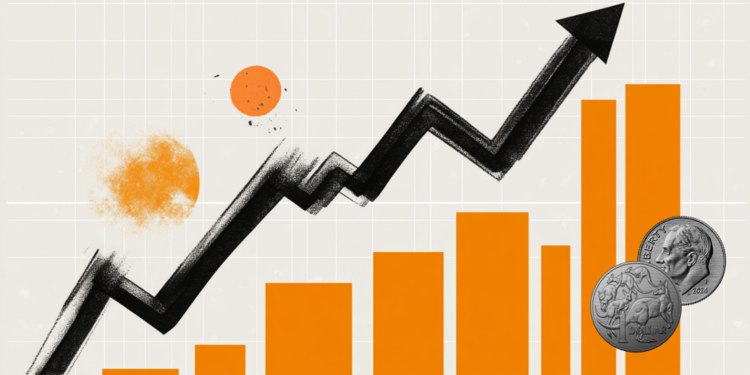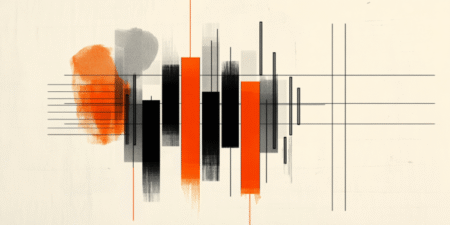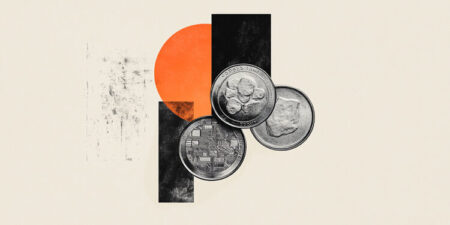- AUD/USD climbs for the fourth straight day, buoyed by a weaker US Dollar and rising expectations of a September Fed rate cut.
- Markets are fully pricing in a 25 basis point rate cut by the Reserve Bank of Australia (RBA) on August 12, which would bring the cash rate down to 3.60%.
- All major Australian banks including ANZ, CBA, NAB and Westpac expect further easing, with year-end rate forecasts around 3.35%.
The Australian Dollar (AUD) is consolidating gains against the US Dollar (USD) on Friday, buoyed by weakness in the Greenback amid growing expectations that the Federal Reserve (Fed) will cut interest rates in September, following soft labor market data and signs of a slowing US economy.
At the time of writing, the AUD/USD pair is trading around 0.6520 during the American session, heading into the weekend poised to post weekly gains of approximately 0.80%. Meanwhile, the US Dollar Index (DXY), which tracks the value of the Greenback against a basket of six major currencies, remains pinned near a two-week low, hovering around the key 98.00 psychological mark.
Attention now shifts to the Reserve Bank of Australia’s (RBA) monetary policy decision. At its last meeting on July 8, the RBA unexpectedly kept the cash rate at 3.85% when a cut was almost fully priced in by interest rate futures. Markets are now also fully pricing in a 25 basis point rate cut at the upcoming RBA policy meeting on August 12, which would bring the official cash rate down to 3.60%. According to a recent Reuters poll, economists believe the central bank could cut again before the end of the year, with some even forecasting the rate to drop to 3.10% by early 2026.
Signs of a cooling labor market and easing inflation are supporting the case for further policy easing. Australia’s trimmed mean CPI dropped to 2.7%, and the unemployment rate ticked up to 4.3% in June. That said, all of Australia’s major banks – ANZ, CBA, NAB, and Westpac – expect rates to be 3.35% at the end of this year.
According to several economists, the RBA may signal as early as next week that its rate-cutting cycle is nearing an end, potentially dampening market expectations of a deeper easing path. The shift comes as central banks globally weigh the lingering impact of the Trump administration’s tariffs on inflation and growth outlook. RBA Governor Michele Bullock has also flagged heightened external risks, citing the fragile global outlook and ongoing US-China tariff tensions, which could feed into imported inflation and disrupt commodity flows, a key factor for Australia’s trade-reliant economy.
Traders are also closely watching trade developments between the United States and China. Talks to extend the current 90-day tariff truce, which is set to expire on August 12, are reportedly progressing, with both sides showing cautious optimism. US Commerce Secretary Howard Lutnick suggested on Thursday that an extension is “likely,” although a final decision awaits President Trump’s approval.
Looking ahead, next week could prove pivotal for the Australian Dollar, with multiple catalysts on deck. In addition to the RBA’s highly anticipated rate decision, Australia will release key labor market figures and the Q2 Wage Price Index, both of which could influence the central bank’s forward guidance. In the United States, upcoming inflation and consumer data, including the Consumer Price Index (CPI), Producer Price Index (PPI), Retail Sales, and the preliminary reading of the Michigan Consumer Sentiment Index for August, will help shape expectations around a potential Fed rate cut in September. Meanwhile, any developments in US-China trade negotiations could further sway risk sentiment, leaving AUD/USD exposed to heightened volatility as the week unfolds.
RBA FAQs
The Reserve Bank of Australia (RBA) sets interest rates and manages monetary policy for Australia. Decisions are made by a board of governors at 11 meetings a year and ad hoc emergency meetings as required. The RBA’s primary mandate is to maintain price stability, which means an inflation rate of 2-3%, but also “..to contribute to the stability of the currency, full employment, and the economic prosperity and welfare of the Australian people.” Its main tool for achieving this is by raising or lowering interest rates. Relatively high interest rates will strengthen the Australian Dollar (AUD) and vice versa. Other RBA tools include quantitative easing and tightening.
While inflation had always traditionally been thought of as a negative factor for currencies since it lowers the value of money in general, the opposite has actually been the case in modern times with the relaxation of cross-border capital controls. Moderately higher inflation now tends to lead central banks to put up their interest rates, which in turn has the effect of attracting more capital inflows from global investors seeking a lucrative place to keep their money. This increases demand for the local currency, which in the case of Australia is the Aussie Dollar.
Macroeconomic data gauges the health of an economy and can have an impact on the value of its currency. Investors prefer to invest their capital in economies that are safe and growing rather than precarious and shrinking. Greater capital inflows increase the aggregate demand and value of the domestic currency. Classic indicators, such as GDP, Manufacturing and Services PMIs, employment, and consumer sentiment surveys can influence AUD. A strong economy may encourage the Reserve Bank of Australia to put up interest rates, also supporting AUD.
Quantitative Easing (QE) is a tool used in extreme situations when lowering interest rates is not enough to restore the flow of credit in the economy. QE is the process by which the Reserve Bank of Australia (RBA) prints Australian Dollars (AUD) for the purpose of buying assets – usually government or corporate bonds – from financial institutions, thereby providing them with much-needed liquidity. QE usually results in a weaker AUD.
Quantitative tightening (QT) is the reverse of QE. It is undertaken after QE when an economic recovery is underway and inflation starts rising. Whilst in QE the Reserve Bank of Australia (RBA) purchases government and corporate bonds from financial institutions to provide them with liquidity, in QT the RBA stops buying more assets, and stops reinvesting the principal maturing on the bonds it already holds. It would be positive (or bullish) for the Australian Dollar.
Read the full article here















